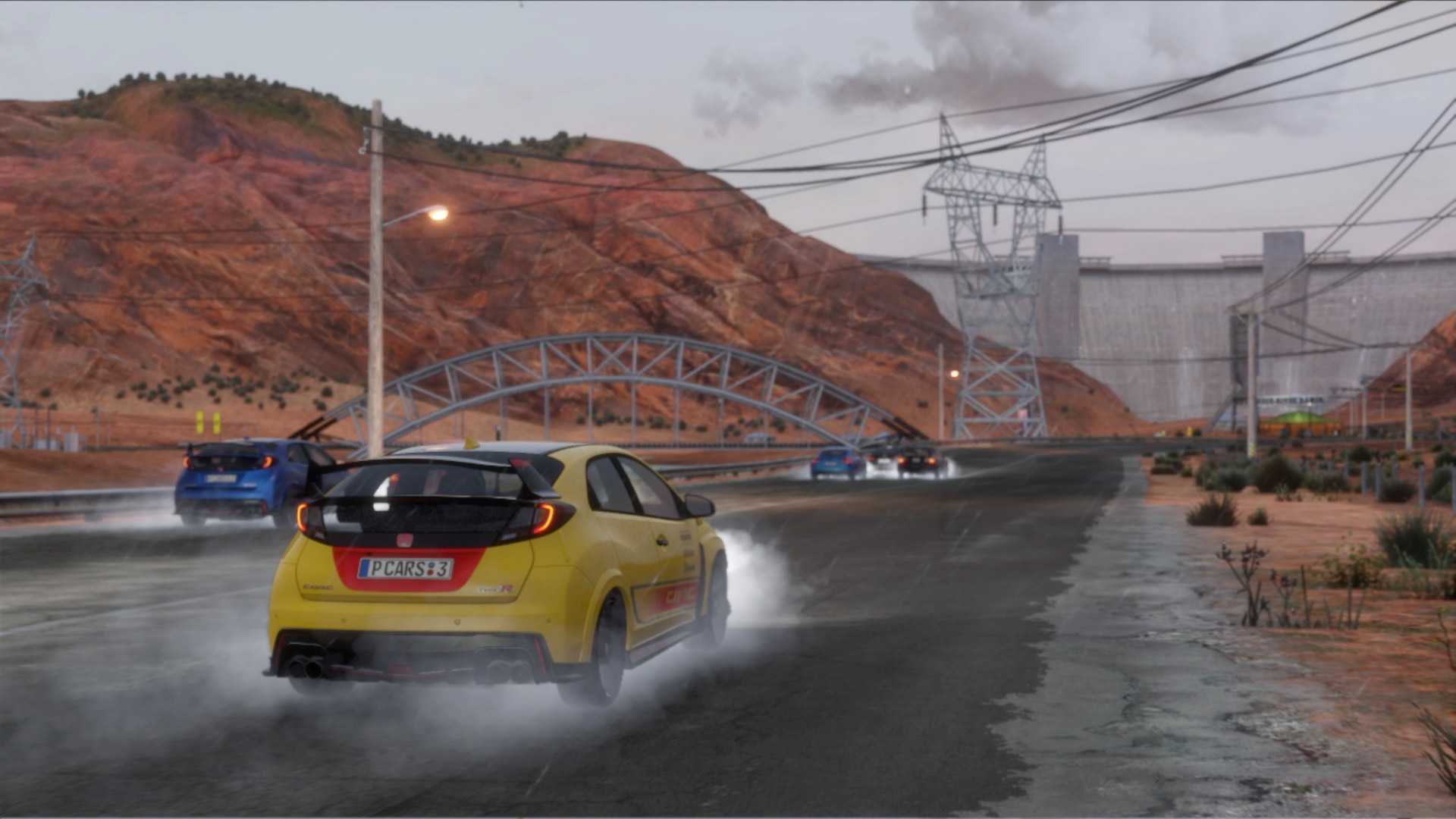Project Cars 3 Review – Project in Progress
Project Cars 3 is an interesting proposition. On one hand you have a very accessible arcade-like racing game that newcomers and newbie racers such as myself would appreciate. On the other, a racing simulator that doesn’t really… “simulate” well enough to be advertised as such. The CARS in the title means Community Assisted Racing Simulation after all, but this latest installment sort of feels anything but that. It may be hard to understand, but we’re here to talk about that and more in our review of Project Cars 3.
Project Cars 3 may come as a shock to fans of previous installments. Project Cars 2 was widely regarded as a good / great racing sim that had tons of content and impressive details that was demanded of a racing simulator. In this regard, fans and veterans of the previous game may feel slightly jilted at the change in direction, but Project Cars 3 is a fun ride that will appeal to a much wider audience, simulation enthusiasts included (slightly).
Work your way to the top
Project Cars 3 (PC3) introduces a very straightforward single-player campaign – no story, no celebrities, no drama. Just you, your car, and your goal to be the best driver out there. Somehow, its a refreshing change of pace compared to other similar racing titles.
You work your way up the ladder by qualifying for the next series (referred to in-game as Road E, Road D, Road C, and so on), take on races, tick of race objectives to open up more tracks (full list here), earn money and experience points to buy upgrades, and so on. It’s a pretty simple concept that’s not too hard to understand, and most players will appreciate the no-frills simplicity to it.
Race objectives are goals that you’ll have to hit during each race and the more you hit, you’ll be able to unlock more races and challenges. These objectives range from performing good corner turns, more complicated ones like performing X overtakes over Y time, and even simple ones such as winning the race. Its a fair indication of skill and will be what allows you to move to the next level in the campaign and take on tougher challenges…
Or you can simply buy your way through to the next series, and while it isn’t recommended, at least you have options if you’re seemingly stuck trying to get that last objective you need before you can proceed.
Project Arcade
Overall, the driving is easy to execute and understand such that beginners will be able to pick up the controller and jump into a race right away. There are numerous assist toggles that you can either turn on or off, like brake assist or steering assist, and each setting that you toggle will reward you with an increase or decrease in the experience points multiplier that directly affects how much XP you’ll get after a race.
There is also a setting that allows markers during a race that will tell you the most effective racing line you should be taking, as indicated by floating signs, which I found to be much less distracting than how other racing titles would do it, literally marking the road with the line you have to take.
All of this results to great vehicle handling and Project Cars really hits the mark on this one. Steering is responsive and driving doesn’t feel as hard or as daunting as racing simulators, and you’ll only really be caught in a hot mess if you totally whiff braking or turning. This change alone makes the game more fun to play than its predecessor, but of course this also comes with PC3 turning into more of an arcade racer over being a sim, which it was known for.
Races are generally short but offer certain variables like weather conditions that will add an extra layer of difficulty to the tracks. Some races will shift weather conditions 1 or 2 laps in, forcing you to change strategy to adapt to the conditions. I can’t count how many races I’ve lost due to the rains appearing on the final lap which is frustrating, but of course also part of the journey to becoming the best driver.
Graphically, the game looks great but you can definitely tell that the tracks and car models are just a notch lower than your higher profile racing games like Gran Turismo and Forza. During races, some parts of the terrain show low quality textures but not enough to really matter in the grand scheme of things. That said, crashes and bumps have little impact on the car visually and while you’ll notice some scrapes and, at most, your front lip hanging over one side, it really doesn’t affect the way you drive.
It’s also worth mentioning that the Photo Mode, while sufficient, can be greatly improved. For a game that can offer fantastic screenshot capabilities, the Photo Mode doesn’t offer too much other than the basic implementation.
The game also offers a Resolution or Frame Rate mode for the PS4 Pro and we did notice a few frame dips during heavy portions of the race (slow corners with car pile-ups, rain, etc), enough to be noticeable, so the improved Frame Rate mode is definitely the way to play the game.
No garage too small
One area that PC3 excels at is customization, and it does offer an impressive list of parts and cars to choose from. There are over 200 licensed cars (the most in the series) from the most iconic brands like Jaguar, AMG, McLaren, Lotus, and Lamborghini, just to name a few (full list here). Each car is accurately detailed and represented that car enthusiasts would get a kick just by browsing through the whole selection.
As a driver just beginning his journey, you’re locked behind some of the more basic cars first but as you level up, you will gain access to more powerful vehicles like the full fledged racing cars and hypercars. It does make sense, narratively, and it’s not like you’ll have enough cash off the bat to purchase that Bugatti Chiron you’ve been window shopping.
There is also an impressive list of parts to customize your car with, and these are divided into actual upgrades and cosmetics. Cosmetic tinkering is where you’ll spend a lot of time on, choosing from various color palettes, tire designs, rims, decals, and many more. They don’t add horsepower to your car, but you can at least lose a race and look cool with your neon yellow ride while doing so.
Upgrades directly affect the power of your car, which is necessary to qualify for the higher race tiers. One thing about the PC3 upgrade system is that you can actually stick with your car for a longer time than you normally would, which is a good or bad thing depending on the way you look at it. You can take your default Honda or Mitsubishi and upgrade it all the way to the top which is great since the tougher races really rely on vehicle familiarity but with over 200 cars to choose from, it would also be great to switch cars often, which the game doesn’t let you do as much. We’ll explain in a bit.
It’s quite irritating though that if you upgrade to a certain part (for example, better tires) and you need to go back because that upgrade puts you over the horsepower limit of a series, you’ll need to pay a small amount rather than just switching back. Small nitpick, but irritating nonetheless.
Roadblocks abound
While PC3 has a number of things going for it, the game also suffers from a list that fails to hit the mark. The user interface of the game feels particularly clunky and getting to certain parts of the menu takes more “clicks” than I would have wanted it to. Some parts of the car customization, in particular, has options that you don’t even see right away until a few more button presses in, which is kind of annoying.
The UI also feels like something straight out of a mobile game, with a lot of left to right sliders and trigger button taps. This isn’t necessarily bad in a sense, especially when you think about some of the mechanics of the game feel like mobile game mechanics, like paying currency to unlock a preset slot or paying to unlock the next race or series.
The game also employs Player levels and Vehicle levels. Both levels will increase naturally as you race and will offer the players rewards. Increasing your player level will unlock more cars to choose from and increasing your vehicle level will give you a bigger discount when purchasing upgrades, which is great, but also forces you to remain in your car rather than wanting to try out other vehicles. Its a very contradictory design decision that limits players instead of encouraging them to try out the other cars.
Speaking of contradictory design decisions, certain race types like hot laps (I hate hot laps) are particularly unforgiving, since running off course or bumping into a barrier will invalidate your lap time, which is what these race types are based on. Unless you drive a perfectly clean race, you’ll be forced to repeat them a lot, more than you’d like to, quite the opposite of making the game more accessible.
What we liked:
- Cars are accurately represented with attention to detail
- Hefty list of cars and customization options
- Controls and car handling are easy to learn
- Fun enough to entice racing newbies
What we didn’t like:
- Contradictory design decisions
- One too many level systems
- Clunky UI
- Basic photo mode
Verdict:

Project Cars 3 fall under that perfect definition of “You’ll love / hate the game IF…” Racing sim fans and even fans of the series will feel a bit dismayed but it certainly hits the objective of appealing to a wider audience base.
It is important to note that Project Cars 3, despite its arcade-y form, is still a fun racing game. It isn’t the most polished racer out there not is it the sim that fans of the series have come to love but at its core, it is entertaining and easy to immerse yourself in. Between the impressive list of cars to choose from and the lengthy single player campaign, there is a lot to do in the game which culminates in the online multiplayer that pits you against the best racers in the community.
Project Cars 3 was reviewed on a PlayStation 4 Pro via a code provided by the Publishers.























